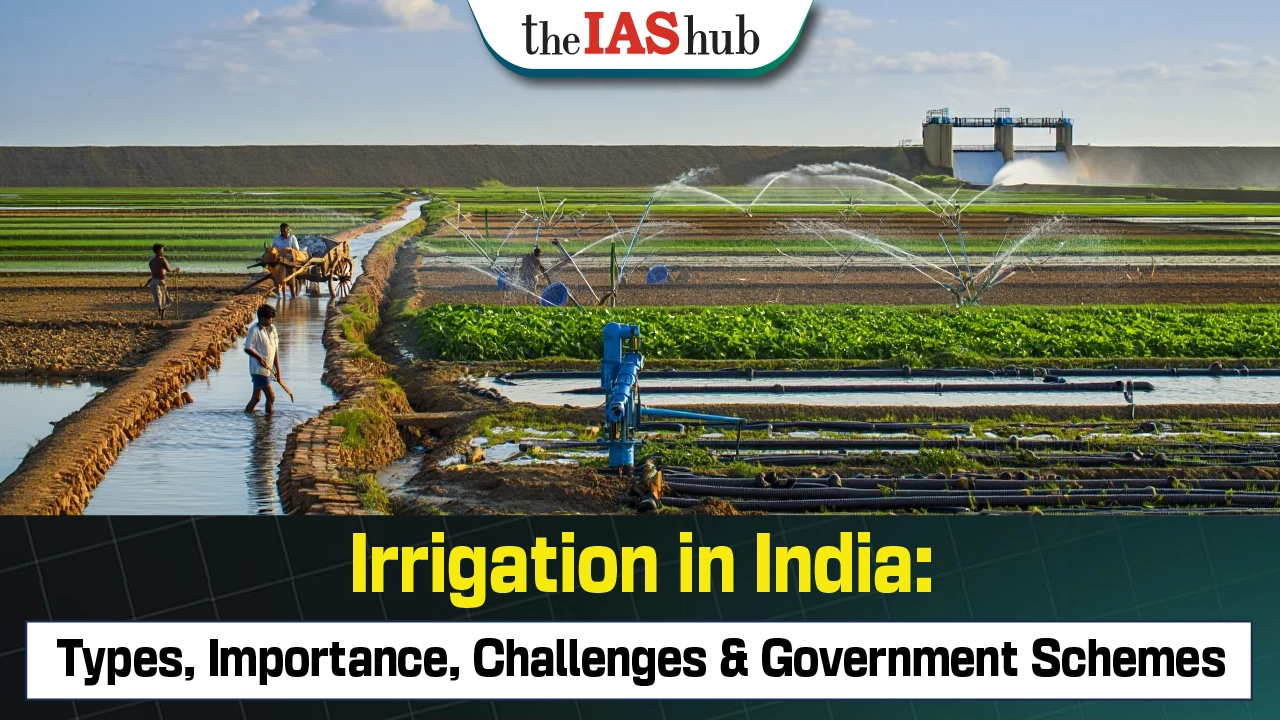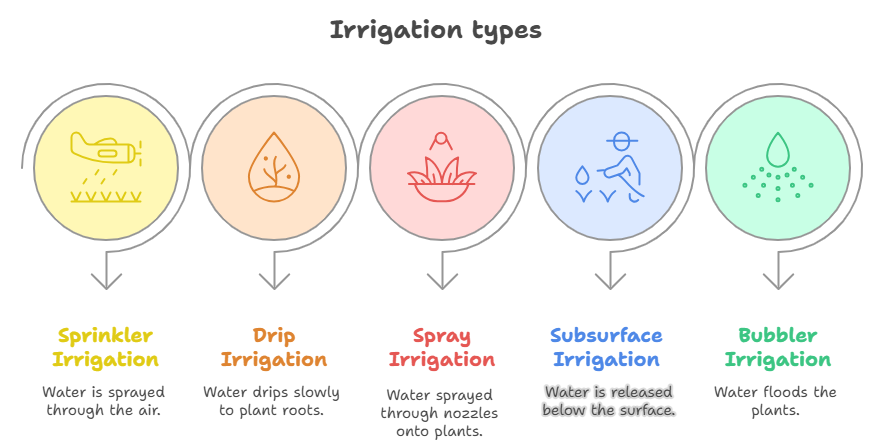Irrigation in India is vital for crop growth and water management. Learn about types of irrigation, the role of micro irrigation, key challenges like high costs and inefficiency, and major government schemes like PMKSY aimed at improving water use efficiency.


Irrigation is the practice of applying controlled amounts of water to land to help grow crops, landscape plants, and lawns. It helps to grow agricultural crops, maintain landscapes, and revegetate disturbed soils in dry areas and during periods of less than average rainfall.

Micro irrigation is a modern method of irrigation; by this method water is irrigated through drippers, sprinklers, foggers and by other emitters on the surface or subsurface of the land.
There are majorly 5 types of Micro Irrigation Systems

Pradhan Mantri Krishi Sinchayee Yojana
Ensuring access to water to every farm (“Har Khet Ko Pani”).Improving water use efficiency (“Per Drop More Crop”).
Per Drop More Crop: Under Ministry of Agriculture; focuses on water conveyance and precision water application in the farm (Jal Sinchan).Integrated Watershed Management Programme (IWMP): Under Ministry of Rural Development; focuses on development of rainfed portions and culturable wastelands. |
It is time that India in her concern for the environment, ecology, social/human, and rights relating to water shifts the subject of water to the concurrent list of the Constitution and frames policy that aims at transforming the country into a Sujalam [richly watered], Suphalam [richly fruited] and Sasya Shyamalan [richly harvested].


Refine your answer writing skills and elevate your UPSC preparation with personalized support and expert feedback.
Fill out the form to get started with the program or any other enquiries !








Are you dreaming of becoming an IAS officer? Then, IAShub can be your best guide. It is one of the Best IAS Coaching in Delhi. Many students who want to clear the UPSC exam join IAShub for learning. The institute gives both online and offline classes. Their teachers are experienced and helpful. They easily explain every topic. Students also get notes, tests, and tips to do well in the exam.
IAShub is in Delhi and is trusted by many UPSC students. It offers coaching for every part of the UPSC exam – Prelims, Mains, and Interview. The classes are simple and easy to understand. The teachers are experts and guide students in the right way. IAShub is also known for its helpful notes, test series, and answer-writing practice. IAShub is the best coaching in Delhi and also gives UPSC Online Classes. This helps students from any place in India to learn. The online classes are live and also recorded. So, students can watch them anytime. These classes cover the full UPSC syllabus.
Here are some important services provided by IAShub:
The UPSC Civil Services Exam has three parts:
This exam is tough, but with the right guidance, it becomes easy to manage. Students must study smart and stay regular.
IAShub supports students from the beginning to the end. It gives the right books, tests, and notes. The classes are easy to follow, and the teachers are always ready to help. Students get personal doubt sessions too. The test series and answer checking help students learn where they need to do better. Also, free study materials save time and money.
IAShub also guides students during the final stage – the interview. Experts take mock interviews and give useful tips. This full support makes IAShub one of the best IAS coaching in Delhi.